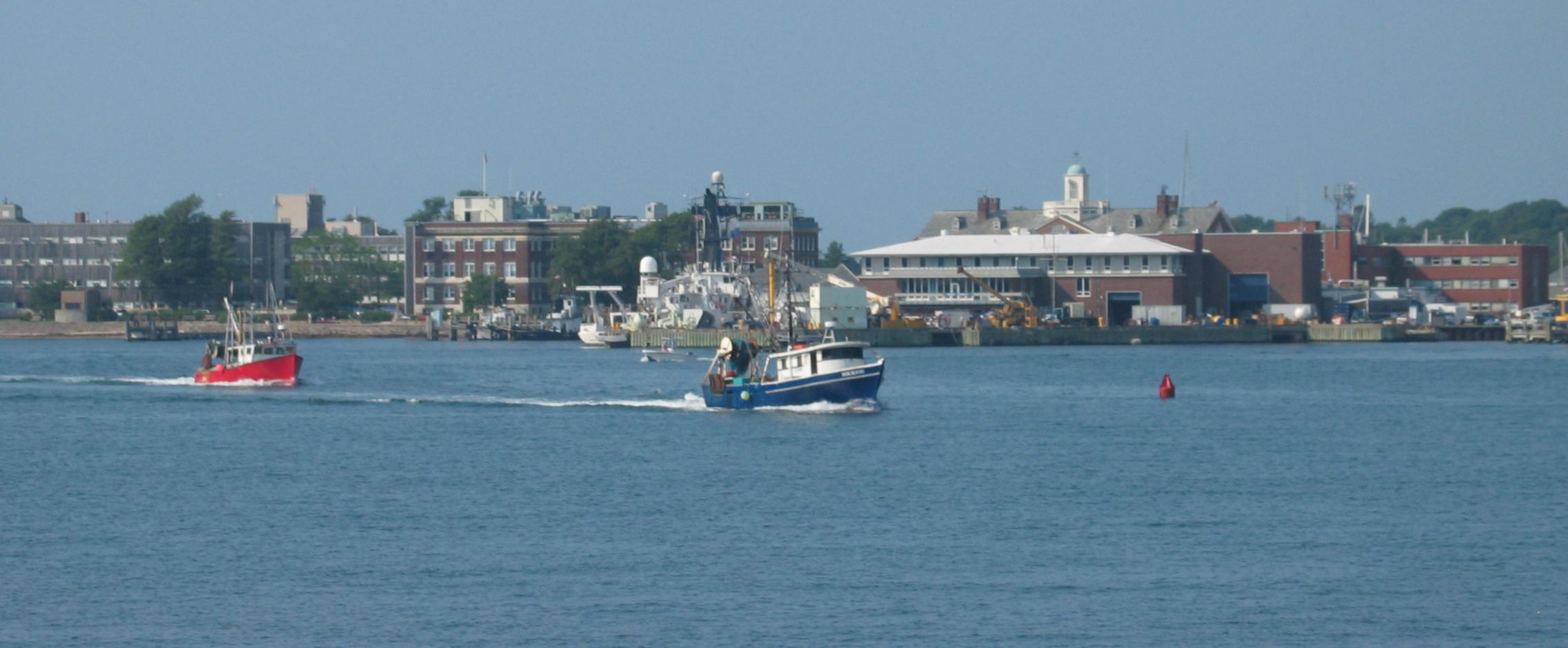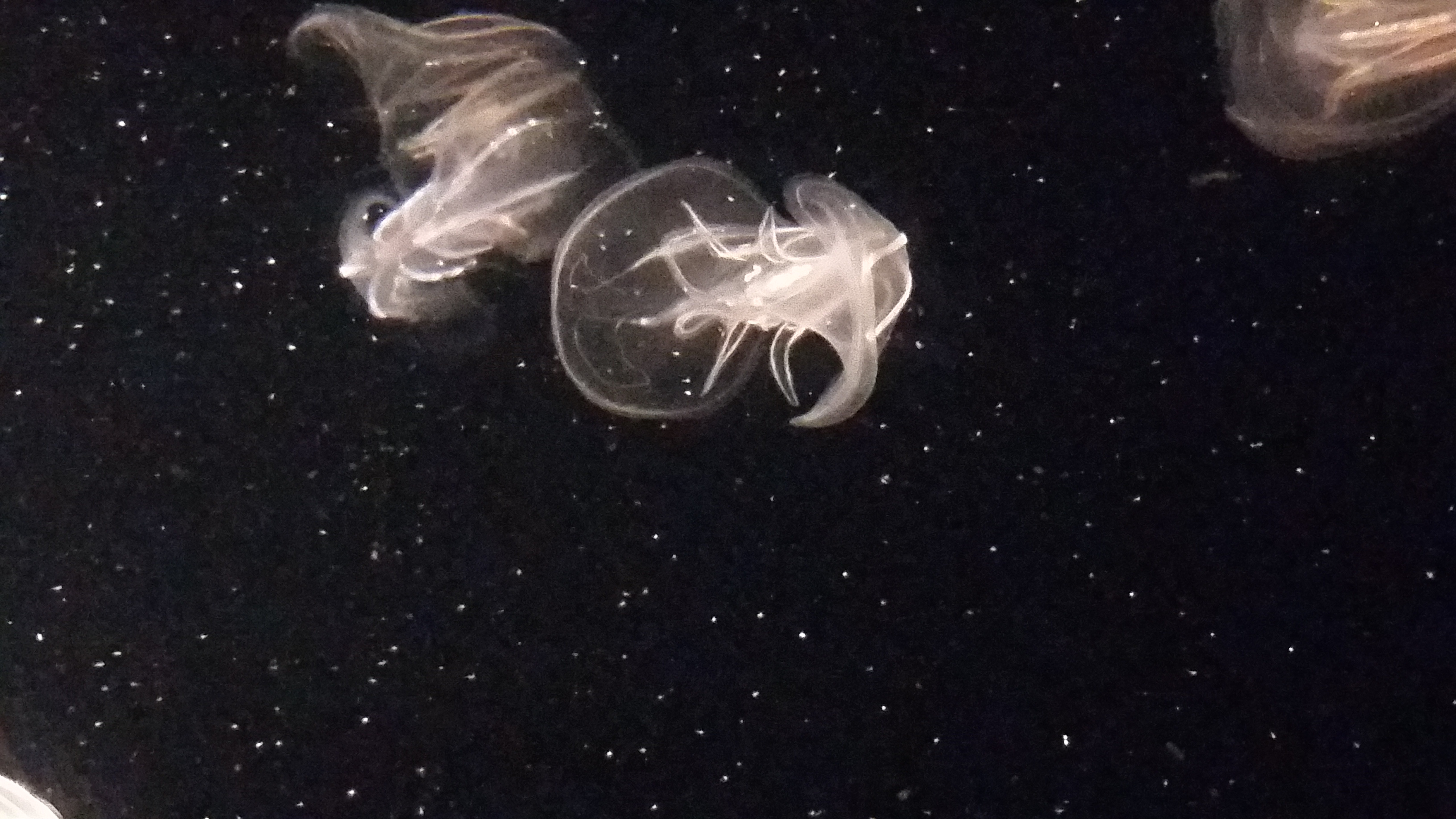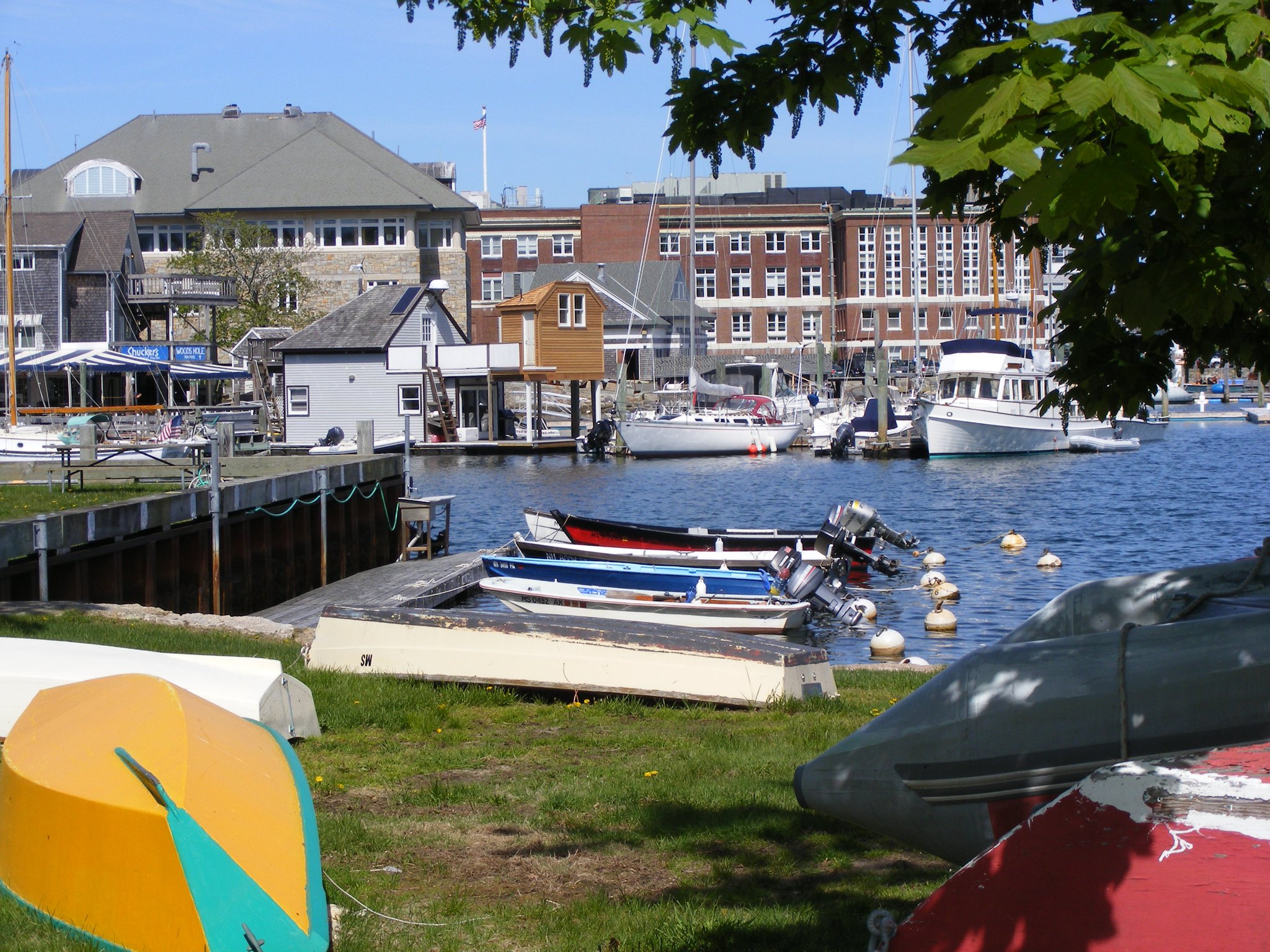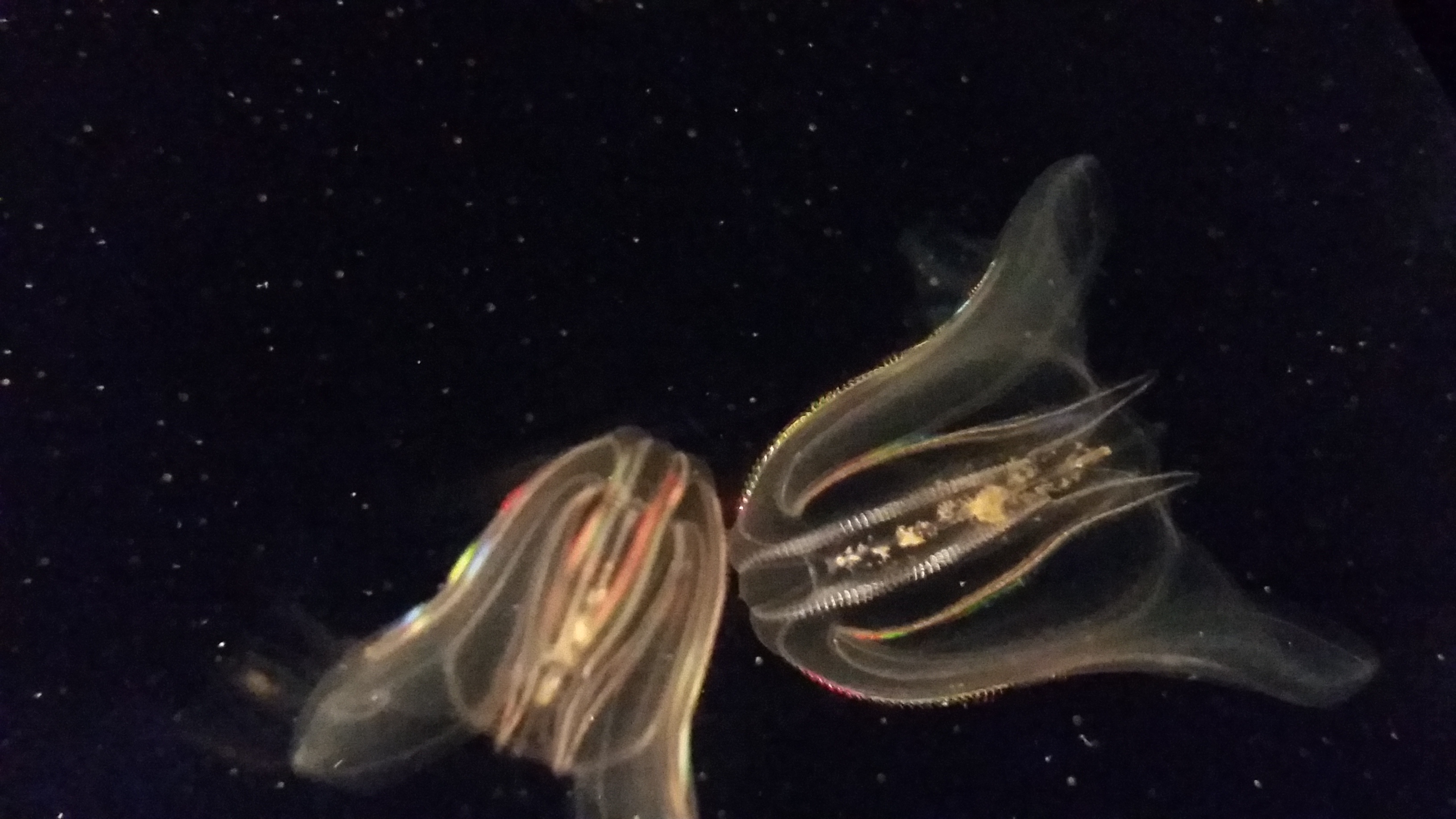How this beautiful, invasive jellyfish adapts to dominate foreign ecosystems
My team combined work in the field and the lab to understanding how comb jellies work
I spent the summer before college graduation mastering a fancy scientific instrument: a plastic beaker duct-taped to the end of a wooden stick.
Even among the geeky summer crowds that flock to Woods Hole, MA, a delightful hybrid of beachside town and global nexus of marine science, the five of us in my field team must have cut an odd figure. We’d cross the street from the lab to the shore with a jumble of buckets, nets, and the cup-on-a-stick, all while smiling and laughing.

Downtown Woods Hole, MA
Cornelia Jaspers, then a newly minted PhD from the Technical University of Denmark (presently at GEOMAR – Helmholtz Centre for Ocean Research Kiel) and leader of our troupe, would beam as we reached the dock. She was in her element, keen to explore the western Atlantic waters, the source of an invasion slowly unfolding in her Scandinavian home across the sea. The buzzing Woods Hole setting, our disarray, and our congenial attitudes belied the gravity of the circumstances that had brought our team together: the need to understand this invasive species, which has been linked to millions of dollars in damages. Woods Hole is in the middle of its native habitat.
From those field sessions, I can attest that the cup-on-a-stick is the best method for catching the comb jelly Mnemiopsis leidyi. These delicate creatures are a few centimeters long at most, an orb of clear jello-like tissue from which two sweeping lobes extend, flanking the mouth. Between those, four small, tentacle-like auricles search the water for food. Their namesake is the eight bands of tiny, hair-like cilia – ctene rows, or combs – which beat in glittering waves arcing along the curves of M. leidyi's body.

The majestic, but disastrous, comb jelly, or M. leidyi
Kelsey Lucas
Yet, as beautiful, small, and harmless as M. leidyi appears, it is one of the roots of a slow-moving disaster.
Comb jelly for days
The invasion began in the early 1980s, when M. leidyi was accidentally plunged into the Black Sea when a ship from the Americas let off its ballast water. By the end of the decade, M. leidyi had established itself as a dominating force shaping the ecosystem in the Black Sea, using its ctene rows to create stealthy currents around its body to draw in unsuspecting prey: other small planktonic animals.
The trouble was, these zooplankton were the foundation of an already-functioning ecosystem. Copepods and other microscopic crustaceans are food for small fishes living in the area, like anchovies. Overfishing, now compounded with a lack of food due to M. leidyi, led the fish populations to plummet. Hundreds of fishermen lost their livelihoods when things came to a head at the dawn of the 1990s. Catches dropped to a third of their size – an estimated $16.8 million loss – and the Black Sea ecosystem was fundamentally altered.
Our little sampling session in Woods Hole, nearly 30 years later, was prompted by more recent events with consequences potentially as devastating. In 2006, M. leidyi was discovered in a bay in eastern Denmark, on the doorstep of both the Baltic and North Seas. The comb jelly had likely been introduced through ship ballast a few years before, similar to how it arrived in the Black Sea. Over the course of the next few years, M. leidyi began to expand into both bodies of water. Jaspers’ graduate work began during this period, giving her a unique opportunity to study the comb jelly as it spread. Her comprehensive work documents the basic biology – like salt tolerance, reproductive rates, etc. – that governs M. leidyi.
But this work alone could not explain all of the specifics of M. leidyi’s spread, or address the larger questions about what makes it such a successful invader. What was M. leidyi doing on a day-to-day basis? What other factors were controlling its spread? Can we use these to predict where M. leidyi would have the largest impact?
The answers to these questions would serve two critical roles. First, they would improve our understanding of how invasive species work in the ocean, which, due to scale alone, can be difficult to monitor thoroughly in real-time. Second, they could provide exactly the sort of information policymakers need to create targeted plans to prepare and manage fisheries in regions that could otherwise experience a crash like in the Black Sea.
Connecting the dots
Jack Costello of Providence College and Sean Colin of Roger Williams University, who share a lab at the Marine Biological Laboratory in Woods Hole, had some of the missing pieces. The duo’s focus is how gelatinous animals interact with the water to feed. And feeding, in turn, controls the rate at which M. leidyigrows and reproduces.

The Marine Biological Laboratory in Woods Hole, MA
Costello and Colin knew from previous work that M. leidyi makes slow, smooth feeding currents so subtle that even sensitive prey that monitor water movement around their bodies can’t detect it. But, Costello and Colin also knew from collaborator Kelly Sutherland of University of Oregon that even small levels of turbulence – chaotic water movement and mixing caused by surfaces waves or rocky shorelines – disrupts these currents.
Turbulence, therefore, was likely one of the missing pieces of information that would explain M. leidyi’s distribution and impact. To show this, Jaspers set up two types of aquaria – some with a turbulence pump system, and some without. Three comb jellies were place in each tank, along with 150 individuals of prey. After a couple hours, Jaspers collected the jellies and would count the remaining prey. As anticipated, M. leidyi caught less prey under turbulent conditions than in calm conditions.
Next, Jaspers hoped to show that the same changes were happening in the wild, leading to the field work where you met us at the beginning of this piece. On both windy – leading to surface waves and turbulence – and calm days, we went out to the dock near the lab.
To measure how many M. leidyi and prey were present, we towed fine-meshed nets through the water, and counted the comb jellies and zooplankton. We also caught comb jellies with the cup-on-a-stick (so we wouldn’t mutilate them). Because comb jellies are transparent, we could use a microscope to see what was in their digestive systems.
Comb jellies prove hard to pin down
When Jaspers analyzed the data later, however, the results weren’t what we had expected. There was no difference in how much food, or what types of food, M. leidyi ate during turbulent and calm conditions in the field. We were flummoxed: was everything we had seen in the lab wrong? What could we have missed?
The team was in one of the most interesting positions scientists can find themselves in: where unexpected results create more questions and challenge you to think creatively. Reviewing the turbulence data, we began to realize things were more complicated than we initially expected.

Kelsey Lucas
Even on the windiest days, you only had to descend 1.5 meters before the wave-driven turbulence completely died: deeper water was calm. The team knew that some zooplankton, like copepods, would dive into deeper water if the surface waters were too rough. Perhaps M. leidyi was doing the same thing?
No one had actually seen M. leidyi do this behavior before – it’s not easy to track something moving in the vast expanse of the ocean. This would have to be confirmed in the lab. Jaspers rigged up a new experimental system: a tall aquarium tank with a simple motor on top. The motor would cyclically raise and lower a plunger into the surface waters of the tank, creating surface waves similar to those in the wild. The tank was deep enough that a turbulence gradient was established. Some comb jellies were added to the tank; video would document their movements. And, by running tests without the plunger, M. leidyi’s behavior in calm conditions could be documented for comparison.
Contrary to our expectations, the comb jellies’s behavior was unchanged, save that they increased their swimming speeds when the waters were turbulent. Dusting off their SCUBA gear and underwater filming system, which would allow them to track M. leidyi in the field for just a couple minutes, Colin and Costello found the same thing.
Combining this information with our basic knowledge of M. leidyi’s biology, Jaspers, Colin, and Costello realized that swimming faster meant bumping into more prey, partially compensating for the degraded feeding current. And M. leidyi could use its auricles, those four probing tentacles, to spoon passing prey into its mouth just as easily when swimming as when sitting still.
Bridging lab and field
We had begun this project asking what felt like a simple question: how might turbulence influence M. leidyi’s ability to feed? There hadn’t been one answer as we initially had supposed. Instead, we found two – diving deep, but also, swimming fast to keep prey encounter rates up when stuck in turbulence.
This explained why M. leidyi could be so dominant a predator in the Black Sea and other places it has been introduced: it can adapt its behaviors to match changing environmental conditions. Turbulence may only limit the comb jelly's ability to invade and establish itself in the most dynamic coastal ecosystems, where no refuges are present, and it can’t maximize its feeding. Calmer coasts, provided they also match M. leidyi’s temperature and saltiness needs, are at higher risk of being colonized. Understanding these constraints to M. leidyi's movements can help us predict which environments it is likely to invade next and create targeted policies to mitigate damage.
Looking back, had we only done the initial aquarium experiments, or only the field sampling, we would have reached the wrong conclusions. This indicates that a true understanding of an animal’s role in an ecosystem comes from bridging lab and field work to link basic biology and behavior. In this way, this study serves a more general, but perhaps more critical, purpose: modeling how to do this.
Peer Commentary
We asked other consortium members to respond with some commentary to this article. In a very small way, this is how peer-review works in scientific journals. We wanted to give you a taste of what scientific discussion looks like! If you want to know more, feel free to contact the scientists directly via Twitter.
Kevin Pels: The attempt to recapitulate the native environment in an aquarium is a nice model. Does it take into account other differences between the aquaria/natural space, in addition to swim rate and depth? Why can M. leidyi adapt but others can't – could this point to a skill-set that many invasive species possess, and that lower-fitness members of a local ecosystem lack?
Also, as someone who is more focused on human biology, I found this article from Siddhartha Mukherjee, with a comparison to cancer metastasis, an excellent accompaniment to the discussion of invasive species.
Lucas responds: Developing a series of tests that connected lab and field work in meaningful ways was one of the most important factors to us while we were designing the experiments. While, as you've pointed out, this study limits its focus to wind-driven turbulence vs water depth, it is very important to think about the interaction of many factors to completely understand what is happening in an ecosystem. One major limitation, which we also ran into here, is that it is difficult to film and take fine-scale flow measurements in the field.
Cornelia Jaspers has previously looked at some of these other factors; temperature, for example, can severely limit M. leidyi's spread. As you've hinted at, now that we have an understanding of many of the basic parameters that – including, for the first time, an understanding of turbulence – it would be very interesting and helpful to explore how these factors intersect.
In regard to how M. leidyi outcompetes local organisms, this is really the key question that we'd love to be able to answer. Yet, scientists have only very recently – within the last 20 or 30 years – began to seriously consider the role of gelatinous organisms in the ocean. I hope that, as we build up our knowledge about different jellies in the coming years, we'll finally be able to start getting at an answer.
Cassie Freund: The thing I like most about this article is that it shows the lengths to which ecologists, or field biologists in general, go to collect our data. Not all science is done in a lab, although controlled experiments (when possible) are certainly excellent tools for understanding the mechanism behind a phenomenon we observe in nature. More often than not, though, our work requires us to think creatively and use unorthodox tools.
In a study I did a few years ago, our version of the beaker-on-a-stick was a hollow plastic tube filled with water that we used in the field as a giant level. Not glamorous, but it got the job done. And sometimes it takes multiple tries and methods to gather enough information and data to answer your questions! Ecosystems and the organisms that live in them are really complex, and it is often a huge challenge to understand the system when you can't manipulate the parts. I thought this story nicely illustrated the unique challenges of fieldwork.
Danbee Kim: This is a great detective tale of using both lab experiments and field work to inform our interactions with another animal species. This is a great example of a well-informed reduction of behavior (based on field studies of wild animals) in order to test its fundamental components in the laboratory.